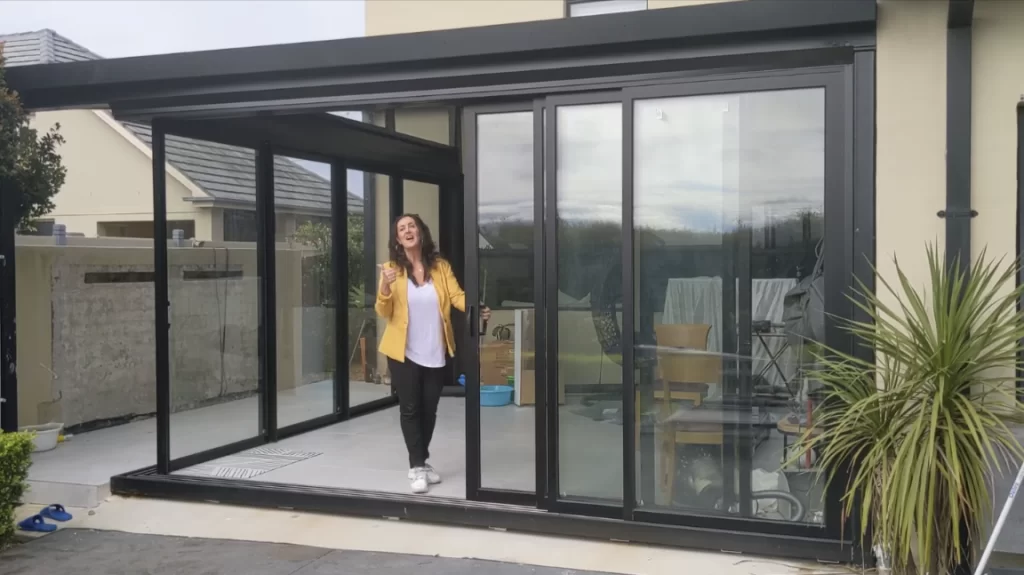WERS Rating
- Home
- WERS Rating

At Energy Saving Windows and Doors, all our products have WERS rating.
WERS Rating
WERS stands for Window Energy Rating Scheme and is managed by the Australian Glass and Window Association (AGWA). The Window Energy Rating Scheme enables windows to be rated and labelled for their annual energy impact on a whole house in any climate of Australia.
WERS (Window Energy Rating Scheme) is a system used in Australia to rate the energy efficiency of windows. The WERS rating indicates the energy performance of a window, taking into account factors such as solar heat gain, heat loss, and visible light transmission. The rating is based on a scale from 0 to 100, with higher ratings indicating more energy-efficient windows.
WERS ratings are used by architects, builders, and homeowners to make informed decisions about the selection of windows for new buildings or renovations. The ratings also provide a basis for comparing the energy efficiency of different window products and can help in the design of buildings that are more sustainable and energy-efficient.
WERS ratings take into account the local climate and geographic conditions, ensuring that the ratings are relevant and accurate for the specific location. Windows with higher WERS ratings can help reduce energy costs, improve indoor comfort, and contribute to a more sustainable built environment.
How WERS ratings are calculated
WERS (Window Energy Rating Scheme) ratings are calculated using a combination of computer simulation and laboratory testing. The calculation process takes into account a range of factors that affect the energy efficiency of windows, including:
Solar Heat Gain Coefficient (SHGC):
This measures the amount of solar radiation that enters a building through the windows. The SHGC is expressed as a number between 0 and 1, with a lower number indicating better performance.
U-value:
This measures the rate of heat transfer through the windows. The U-value is expressed in watts per square meter per kelvin (W/m2K), with a lower number indicating better performance.
Visible Light Transmittance (VLT):
This measures the amount of visible light that enters a building through the windows. The VLT is expressed as a percentage, with a higher number indicating better performance.
Air Leakage:
This measures the amount of air that enters or exits a building through the windows. The air leakage rate is expressed in cubic meters per hour per square meter (m3/h/m2), with a lower number indicating better performance.
Factors considered in the WERS rating process
The following factors are considered in the WERS (Window Energy Rating Scheme) rating process:
Frame Material:
The type of frame material used in windows, such as aluminum, wood, or uPVC, affects the overall energy efficiency of the windows.
Glass Type:
The type of glass used in windows, such as double glazing, triple glazing, or low-e glass, affects the amount of heat loss or gain and the level of visible light transmission.
Window Size and Orientation:
The size and orientation of windows in a building affect the amount of solar heat gain and heat loss, as well as the amount of visible light transmission.
Climate Zone:
The climate zone in which a building is located affects the amount of solar heat gain, heat loss, and visible light transmission.
Building Design and Use:
The design and use of a building affect the overall energy efficiency of its windows, including factors such as the amount of insulation, air conditioning, and lighting.
Glazing Options:
The glazing options available for windows, such as tinted or coated glass, affects the amount of solar heat gain, heat loss, and visible light transmission.
Installation:
The quality of installation and sealing of windows can affect their overall energy efficiency, as well as the level of air leakage and draftiness.
These and other factors are taken into account in the WERS rating process to provide a comprehensive assessment of the energy efficiency of windows.
The WERS rating system provides a reliable and objective method for evaluating the energy performance of windows, allowing building owners to make informed decisions about the selection of windows for their homes or buildings.
Benefits of using WERS-rated windows
Improved Energy Efficiency:
WERS-rated windows provide improved insulation, reducing heat loss in winter and heat gain in summer. This helps to lower energy costs and improve the overall energy efficiency of a building.
Increased Indoor Comfort:
WERS-rated windows help regulate indoor temperatures by reducing heat transfer and minimizing drafts. This leads to a more comfortable and consistent indoor environment.
Enhanced Sustainability:
WERS-rated windows contribute to a more sustainable built environment by reducing energy consumption and greenhouse gas emissions.
Better Sunlight Management:
WERS ratings take into account the amount of visible light transmission, enabling building owners to select windows that provide optimal natural light while reducing the need for artificial lighting.
Better Energy Performance:
WERS ratings provide a basis for comparing the energy performance of different window products, allowing building owners to select the most energy-efficient windows for their needs.
Improved Building Performance:
WERS-rated windows can improve the overall performance of a building by reducing heat loss, improving indoor comfort, and contributing to a more sustainable built environment.
It is important to note that WERS ratings provide a comprehensive assessment of the energy efficiency of windows, taking into account a range of factors such as solar heat gain, heat loss, and visible light transmission.
This allows building owners to make informed decisions about the selection of windows for their homes or buildings.

